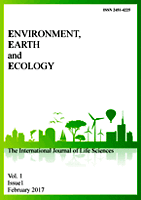ORIGINAL PAPER
Cultivation and economic prospects of Betel Nut (Areca catechu Linn.) and Coconut (Cocos nucifera Linn.) in rural economy: A case study from southeastern region of Bangladesh
| 1 |
Institute of Forestry and Environmental Sciences, University of Chittagong, Bangladesh |
Environ. Earth Ecol. 2019;3(1):24-34
KEYWORDS
TOPICS
ABSTRACT
Betel Nut and Coconut are two important crops in the homesteads and farmlands of South-Eastern region of Bangladesh. An exploratory survey to assess the cultivation, contribution and importance of palm husbandry in rural economy was conducted at Ramu upazila under Cox’s Bazar District, Bangladesh. A total of 120 households’ heads were interviewed who were selected following stratified random selection method. The findings revealed that betel nut contributes 19.06% (78345 TK) of total annual household income whereas coconut contributes 6.07% (25017 TK). Orchard, pond bank, homestead and road sides were the four cultivation sites of both palms. Orchards were at top of farmer’s preference for cultivating betel nuts while homesteads are of greater preference to farm holders for coconut trees. Annual production of betel nut was highest (547 betel nuts per tree) at their 11-20 years age range. Annual production per coconut tree was maximum (58 coconuts) at 21-30 years age class. The availability of palm trees of different age classes reflects a sustainable production system of betel nut and coconuts in the study area. Palm husbandry could be a promising sector of rural economy in Bangladesh if the marketing system is well developed reducing involvement of middlemen in the business.
Corresponding author
Rajasree Nandi 
Institute of Forestry and Environmental Sciences, University of Chittagong, Rajasree Nandi, Assistant Professor, Institute of Forestry and Environmental Sciences, University of Chittagong, 4331 Chittagong, Bangladesh







